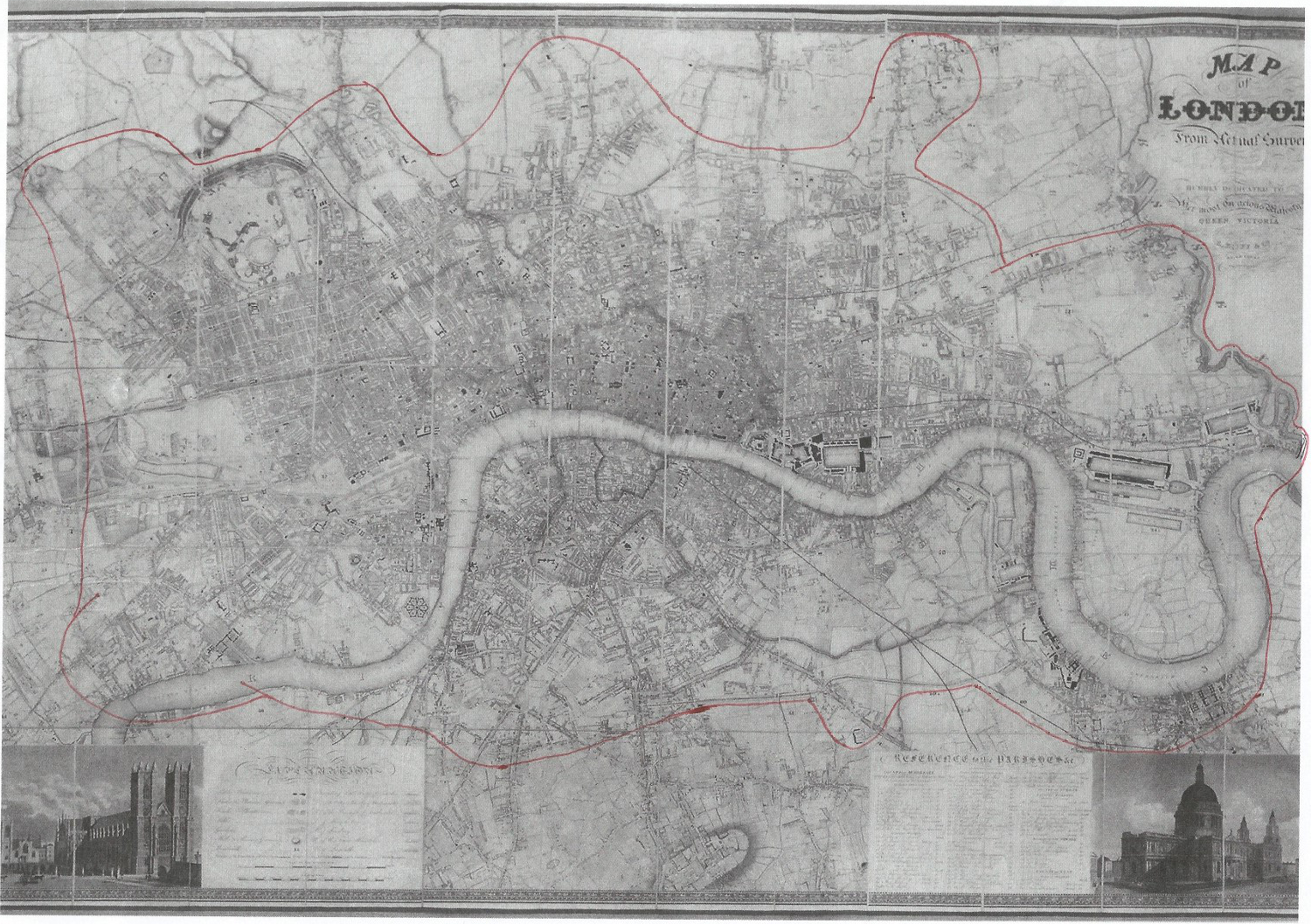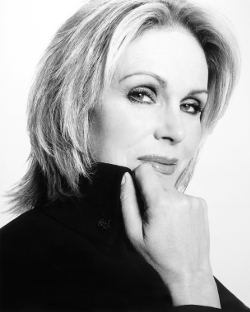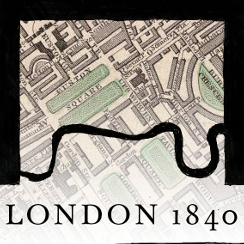A little history.
In 2013, we were commissioned by English Heritage to build a model of part of Bloomsbury as it was in 1840, to coincide with four exhibitions it hosted at the Wellington Arch, Hyde Park Corner, to celebrate the centenary of the first protection of historic buildings. This model was built by Billy Dickinson, a technician and tutor at Central Saint Martins in King's Cross, at a scale of 1:500 - three times larger than our main model. At this scale Billy was able to laser engrave the elevations of the buildings in great detail.

Edward Ruff & Co's 1840 map of London, highlighting the area to be modelled. Map courtesy of alteagallery.com.
Why 1840?
In the early to mid-19th century London was perhaps at its height. For long the World capital, by 1840 London was the most populous city in the western world with almost twice the population of Paris. It was also the richest city, with a globally dominant economy - Europe's first modern trading, financial and industrial centre.
By 1840 London had expanded hugely, reinforced its commercial might with the construction of vast new docks and canals, and, from 1835 had become the focus of the nascent railway age, which at that time had shifted from the provinces to the capital, so much so that in 1840 London had six railway termini.
1840 is also seen as the year that marks the end of the Georgian era and the start of the Victorian era.
From Stepney Green to the London Docks, crossing over the London and Blackwall Railway of the late 1830s.
Why an old fashioned model? Why not a modern digital model?
Architectural modelmakers have never been busier because, surprisingly perhaps, wood architectural models are still remarkably popular. Such models have a warmth and a character that is difficult to achieve with other materials such as perspex, and they age particularly well.
The LONDON 1840 model will indeed have a large digital presence. The research necessary to build the model will generate a huge amount of digital data which, with further research, will produce almost limitless applications such as population densities, building dates, a gazetteer of residents, poverty mapping, estate boundaries, demolition dates, the mapping of trades, etc., all of which can be overlaid and highlighted on the model.
The physical model and the digital aspects complement each other perfectly. Digital overlays are a brilliant way of highlighting specific information but the best way of getting a complete picture of London as it was in 1840 is by viewing the physical model. The elevated 3D bird's-eye view is simply impossible to achieve on a screen.
Why 1:1500 scale?
At 1:1500 the model will in its extremities measure some 10 metres east to west and 6 metres north to south. This will sit comfortably into a large room with space for circulation. At a larger scale the model would become increasingly difficult to accommodate and at a smaller scale increasingly difficult to comprehend. On a similar basis, modelling London at a later date would entail vastly more research to interpret the ever increasing size of the place and a larger space to accommodate it. Dan Cruickshank's suggestion of modelling 1840 at 1:1 was rejected on cost grounds.
The actual area covered by the model is 88 square kilometres or 88,000,000 square metres. By the power of mathematics this is dramatically shrunk to 39 square metres at the scale of 1:1500.
At 1:1500 the gardens of Russell Square, Bloomsbury will measure 11 centimetres by 11 centimetres.
David Armitage adds a building to the model at Dawson’s Gardens, an area north of Commercial Road, Stepney between Sidney Street and Jubilee Street, which was redeveloped shortly after 1860.
Thanks.
Thanks to Maxine Webster at 1st Framework who has encouraged the project tirelessly since 2013, David Armitage who has spent so many days volunteering his time to build the model, Billy Dickinson of Central Saint Martins who built the Bloomsbury model in 2013, Will Palin and Brendan McCarthy at the Old Royal Naval College in Greenwich, Alan Baxter, Polly Hudson, Dan Cruickshank, Sarah Milne of the Survey of London, Peter Avery at 1st Framework, Jane Monahan, Peter Murray at New London Architecture, Eric Reynolds, Antony Dennant, Professor Jerry White, Kathy Collins at North Kent Joinery and Robert Danton-Rees at Capital Models. Also, Simon Richards who took all the photos of the LONDON 1840 model.
Our Patron

Our patron, Joanna Lumley. Photo © Rankin.
